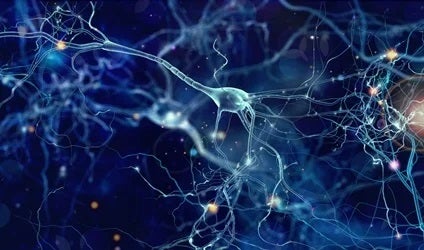Von Economo neurons (or fusiform neurons) are only present in the brains of humans, bonobos, chimpanzees and gorillas, as well as whales and elephants, Santiago Ramón y Cajal defined them as giant fusiform cells and one of the most interesting structures in the world. brain These neurons are related to social behavior or the sense of self.
Most people have heard of mirror cells, however, it is interesting to note that von Economo neurons are not so well known, despite their undeniable importance in our behavior, for example, they help us make decisions, shape our identity, build the fabric of consciousness and even this exceptional sense called intuition.
- It is impressive to know.
- For example.
- That of the 100 billion neurons in our brain.
- Only about 300 thousand are von Economo neurons; however.
- They are up to three times larger.
- On the other hand.
- It should be noted that much of this data has been discovered in recent decades.
- Thanks to advances in functional MRI techniques.
In addition, neurologists claim that the lineage of this single cell was born 15 million years ago with a common ancestor of hominins: Dryopithecus. Another interesting information is that these cells appear in the human brain when the fetus is 36 weeks pregnant.
In recent years, von Economo neurons have become more relevant in the field of cognitive psychology and neuropsychiatry, as they are only found in animals with superior cognitive and social behaviors.
The first description we have of von Economo’s neurons dates back to 1925, it was the Austrian psychiatrist and neurologist Constantin von Economo who introduced them to the scientific world with his work The Cytoarchitecture of the Bark of the Adult Human, described them as elongated spindle -Neurons in the form of a spindle (fusiform), four times the size of a pyramidal cell (can measure between 70 and 100 m).
Subsequently, Dr. Von Economo published a new study providing more data, said that it was a new cell, not yet described, that did not correspond to any type of pathology, was specialized and was located in the island turn.
As surprising as this discovery may seem, it is important to note that it was not considered of great importance, in fact, it was not until the 21st century that neuroscience, psychology and psychiatry began to pay attention, the reason?These cells only appear in animals with superior cognitive and social functions.
Neurologists John M. Allman and Nicole A. Tetreault of the University of California, USA. U. S. , they conducted a study in 2011 to provide new data on von Economo fusiform cells or neurons.
The fact that von Economo or fusiform neurons only appear in humans and animals with more complex social processes gives us an idea of their relevance. It is speculated, for example, that they are characteristic of larger brains, with more complex executive functions and that they can also be the key to understanding, among other things, the evolution of the human species and the emergence of this entity that we call?Mind?.
A study from the University of Iowa (Allman, Watson, Tetreault and Hakim, 2005) found that the brain responds to information and makes decisions faster than our consciousness. So, dimensions, like what we call? Or simple “intuitions” would in fact respond to a very complex neural treatment.
For example, it was possible to discover that Von Economo neurons are crucial to making quick judgments based simply on our intuition.
Von Economo neurons are often defined as the drivers of our brain, thanks to them this extremely complex neural universe is in harmony, supervising processes, directing thoughts and helping us to concentrate, thus, over the years, it integrates our sense identity as well as our own conscience.
If there is one thing we know about fusiform neurons is that they are very large compared to others, which allows them to spread to many areas of the brain, so much so that they have been found to be fundamental in emotional processing and that the insula also contains a large number of von Economo neurons.
It means several things. The first is that it promotes the attribution of an emotional impression to everything we see. The second is that it mediated empathy with these more “social” emotions, such as shame, love, trust and resentment.
The abnormal development of fusiform neurons is linked to the development of various disorders, in this way psychotic behaviors, characterized by distortions of reality, are a clear example; on the other hand, thinking, language and behavioral disorders?Social anxiety or desire for isolation originates from this factor.
In addition, it is important to know that people with Alzheimer’s disease, schizophrenia or who have an autism spectrum disorder, in turn, have degeneration of this type of neurons; one particularly noteworthy fact is that people with suicidal disorders have also been found to have a greater number of these neurons.
As we see, this is information of great relevance and involvement, neuroscience continues to open the way for us to give answers and new ways of treating and responding to many of these disorders and situations, we will be attentive to more information about these neurons that, in a way, define what makes us more human and therefore incredibly complex.

